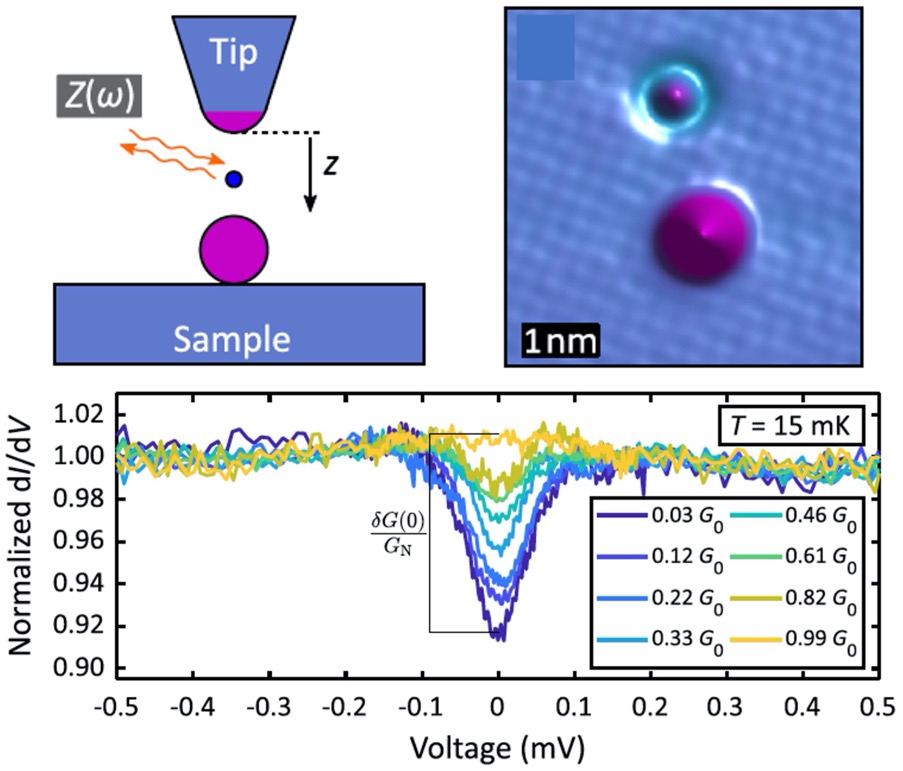Dynamical Coulomb blockade as a local probe for quantum transport
As the dimensions of a conductor are reduced, quantum mechanics starts to play a significant role in its electronic transport properties. Atomic-size contacts, as those produced using STM techniques, constitute the ultimate limit in the miniaturization of electronic devices. In this extreme limit, electrical conduction is mainly determined by the quantum mechanical transmission probability of electrons through the junction. However, deviations from this simple picture can occur at very low temperatures due to the effect of quantum fluctuations in the applied voltage, leading to a phenomenon called dynamical Coulomb blockade.
Now, a novel insight into dynamical Coulomb blockade (DCB) at the atomic scale has been reported in a work published in Physical Review Letters by a collaboration between groups of the Max Planck Institute for Solid State Research (Stuttgart), the Okinawa Institute of Science and Technology, the University of Ulm, the University of Konstanz, and the IFIMAC researchers Alfredo Levy Yeyati and Juan Carlos Cuevas. In this work, these researchers used an ultra-low temperature STM to form few-atom junctions with an exquisite control and they revealed the influence of DCB in measurements of the electrical current. More importantly, they demonstrated that these measurements can be used to determine the transmission coefficients of these atomic-scale junctions. Such a determination was possible thanks to an excellent agreement with a microscopic theory of DCB and the nature of the conduction channels was elucidated with the help of ab initio DFT transport calculations. Thus, they concluded that probing the DCB by STM provides a complementary technique for locally resolving quantum transport characteristics.

